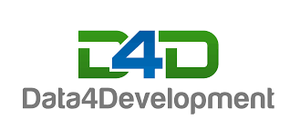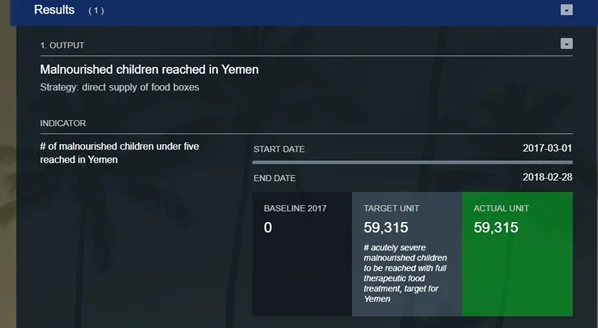Increasing impact through publishing IATI data
We spoke to Anna de Vries, Senior Adviser and IATI coordinator at Data4Development on her work supporting international non-profit organisations.

How are you involved in IATI?
At Data4Development (D4D), I support international non-profit organisations to publish IATI data about their projects that address international poverty and crises. Our clients’ needs for IATI vary widely, for example, I have worked with an alliance of organisations to publish IATI data for a joint programme and helped other publishers to integrate IATI into their regular reporting cycle using existing internal systems.
I took this role as I was interested in how the development sector can learn to become more efficient and increase their impact. Understanding and using data is a great way to do this.
What are the benefits of publishing IATI data?
Publishing IATI data is often seen as an extra reporting burden. However, working at D4D has shown me that it can bring added value to individual publishers such as standardised reporting and improved data analysis.
I encourage IATI publishers to not be afraid of transparency but rather use it as an opportunity to learn and understand how they can improve their impact.
I believe that the international development community needs IATI as it allows us to connect all our stories of impact.
How can IATI data promote impact?
I see IATI as much more than an open data standard or a bunch of XML files combined. Rather, I believe that the international development community needs IATI as it allows us to connect all our stories of impact. It paints a clearer picture of what is going on in the sector, and it opens the path for the development community to be more forward looking.
IATI data can also help link the impact on the ground all the way back to the funding source.
Can you think of specific situations that IATI data can be useful in?
I think back on my time as a programme manager for a non-profit organisation, when I visited a project in a village in Nepal after the 2015 earthquake. I learned that there were many projects simultaneously working on the same thing without cooperating, which resulted in overkill of aid in one area and insufficient aid in another.
IATI is more than just rows of data to me but a real opportunity for engaging in the effectiveness of aid.
This was frustrating to see and I definitely believe that cooperation and information is crucial to achieve the desired impact together. IATI as an open data standard can support that and allow people on the ground to ask the right questions, or even connect organisations who work in the same area or on similar programmes. For this reason, IATI is more than just rows of data to me but a real opportunity for engaging in the effectiveness of aid.
Is there any data that you think is particularly useful for publishers to provide?
I have an M&E (Monitoring and Evaluation) background, so if I had to state a preference, it would of course be results data! People struggling with publishing to IATI are often still looking how they can reach the contractual obligations and no more. However, if you go beyond this, so much more is possible! By including results data, organisations can ensure that their publication tells a story that really means something.
Any advice to organisations on publishing results data?
When publishing results data, here are some key considerations:
- What are the right indicators to use to measure your progress?
- Have you created a baseline and do you report on targets? Only when you compare your targets to your actual results, you can really understand whether your programme reaches the desired impact.
- Is your reporting logically structured to ensure that it actually says something to the people who read your report? It is not enough to just publish data, it needs to make sense.
Only with the right information, organisations can be data driven and improve their impact.
Can you think of any specific use cases for IATI data in M&E?
Here is a general example that I often use when explaining the benefits of IATI to a publisher:
“Imagine you spend $500K in country A and $500K in country B during your reporting period. Your results show that your impact in country A is 80%, whereas in country B your impact is merely 20%. Instead of being afraid of what the numbers tell you, they are an opportunity to think about why this has happened and what you want to do next:
- Do you want to spend more in country B to achieve the same amount of impact?
- Do you want to spend more in country A to target the group where it is most effective?
- Do you need to solve specific blockages in country B?”
This is an example of how results data in IATI can drive effective decisions.
What are the challenges of IATI?
There are a number of challenges with IATI. IATI should provide organisations with a common standard for publishing data. However the inherent flexibility of the IATI Standard lends itself for multiple interpretations of data fields that can in turn lead to a decrease in the usability of the data.
Another issue is that most data published is about inputs, activities and outputs. There is little information about the outcomes and impact achieved by organisations. For example, when publishing data about projects on hunger, an organisation may state that their objective is to solve malnourishment (see an example below of a project in Yemen). However, their indicator only counts the number of food boxes supplied through the project. I would like to know more about how a child was supplied with the food box and how this will lead to fighting malnourishment in the long term.

Tell us about any upcoming work on IATI that D4D has planned.
D4D is committed to making IATI data valuable for non-profit organisations instead of just publishing it as part of compliance. We plan to expand our service of IATI Dashboards that help effectively visualise and communicate nonprofit’s progress and outcomes. We are working to make IATI Dashboards more interactive and responsive to get IATI publishers more engaged with their own data.
In addition, D4D has two data scientists in our team and we aim to do more IATI data research to see what value the IATI data can potentially have for political agenda setting, for example on the inclusivity of women.